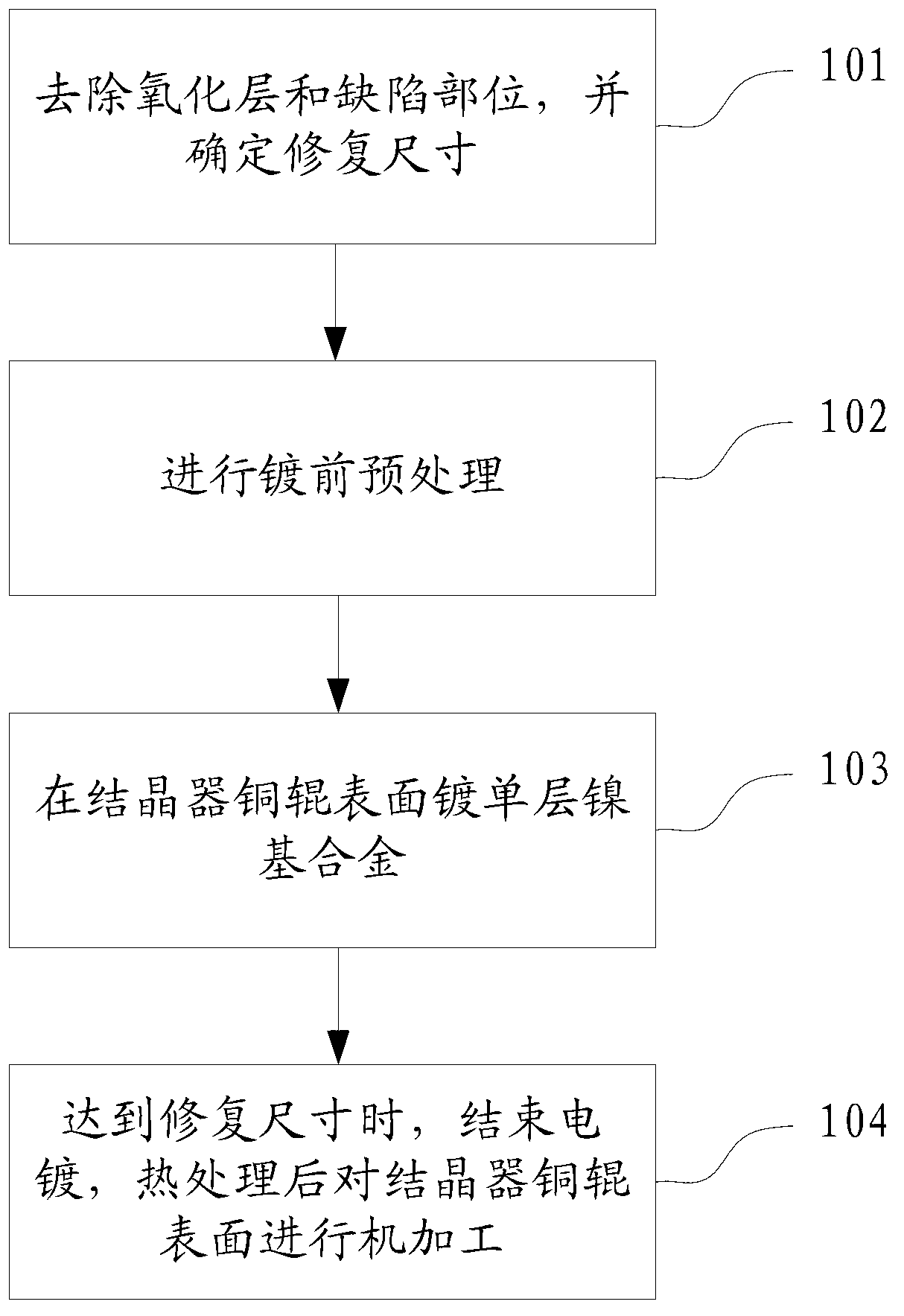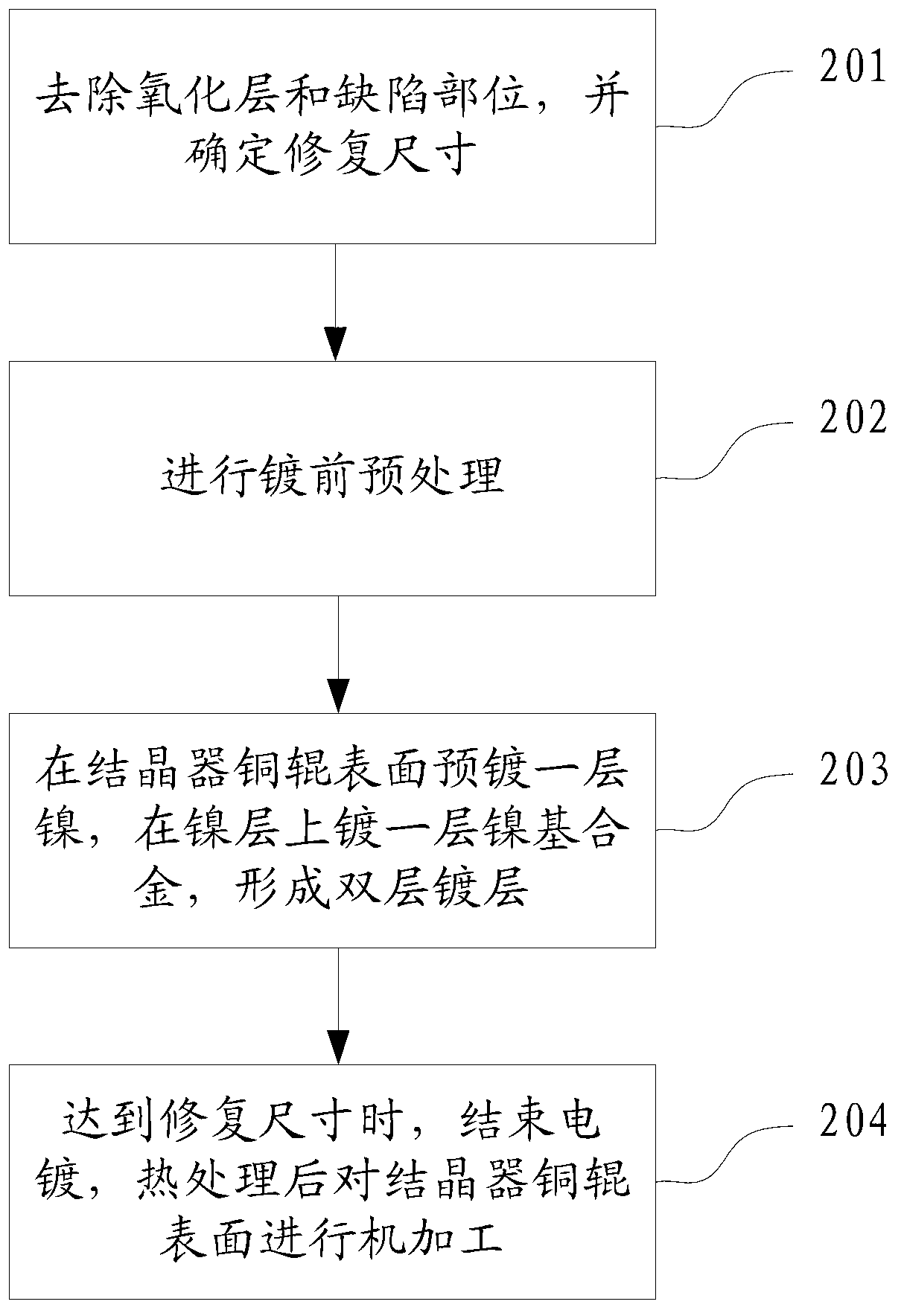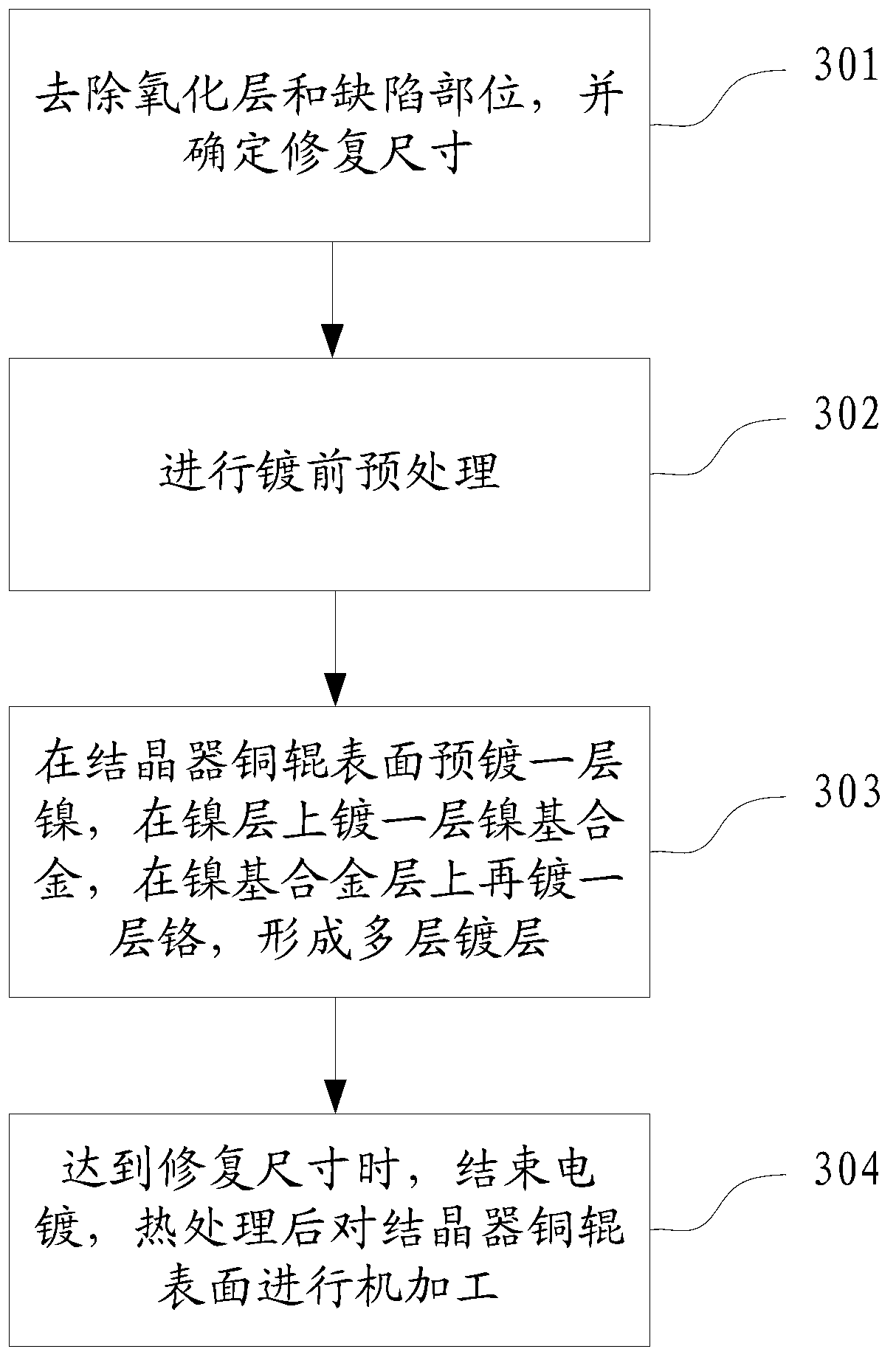Method for repairing surface of copper roller of amorphous nanocrystalline crystallizer
A crystallizer copper repair method technology, applied in nanocrystalline crystallizer copper roll surface repair, amorphous field, can solve the problem of shortened mold life, lower production efficiency and product quality of amorphous alloy, matrix expansion and deformation, etc. Achieve excellent wear resistance and cold and heat fatigue resistance, improve production efficiency and product quality, and achieve uniform and dense coating thickness
- Summary
- Abstract
- Description
- Claims
- Application Information
AI Technical Summary
Problems solved by technology
Method used
Image
Examples
Embodiment 1
[0034] Embodiment 1 single-layer coating—electroplating Ni-Co coating
[0035] 1. Carry out machining treatment on the surface of the copper roller of the amorphous and nanocrystalline crystallizer to remove the surface oxide layer and defect parts. And detect the size data of the removed crystallizer to determine the surface repair size of the crystallizer.
[0036] 2. Use alcohol to clean the oil and metal slag on the surface of the copper roller of the amorphous and nanocrystalline crystallizer, and then clean it with water. Use electroplating to wipe the surface of the substrate with a conventional alkaline degreasing solvent, the temperature of the solution is about 50°C, and then clean it with water. Electrolytic degreasing is performed on the surface of the copper roller of the amorphous and nanocrystalline crystallizer, and the copper roller of the amorphous and nanocrystalline crystallizer is immersed in the degreasing liquid, the degreasing temperature is 75°C, and ...
Embodiment 2
[0042] Embodiment 2 single-layer coating—electroplating Ni-Co gradient coating
[0043] The steps are the same as in Example 1, except that in step 3, the coating layer with a composition gradient structure is prepared by continuously changing the current density, and the current density is changed from 120mA / cm 2 down to 15mA / cm 2 , the gradient Ni-Co coating with increasing Co content from inside to outside is obtained.
[0044] The Ni-Co coating with gradient structure obtained according to the above process has a uniform and dense coating thickness, good bonding strength with the substrate, excellent wear resistance, thermal fatigue resistance, and good thermal conductivity. Demand for the production of amorphous and nanocrystalline ribbons.
Embodiment 3
[0045] Embodiment 3 single-layer coating—electroplating Ni-diamond composite coating
[0046] The steps are the same as in Example 1, except that in Step 3, this example is electroplating a Ni-diamond composite coating, the bath temperature is 45°C, and the current density is 35mA / cm 2 , the plating solution is stirred by air, and the diamond content in the obtained composite coating is about 10%, and a horizontal electroplating tank is used. The composition ratio of the electroplating solution is as follows:
[0047] Nickel sulfamate
300g / L
nickel chloride
20g / L
30g / L
Diamond (0.5-1 micron)
10g / L
0.1g / L
Dispersant
0.1g / L
[0048] The Ni-diamond composite coating obtained according to the above process has uniform thickness and compactness, and has good bonding strength with the substrate. Its wear resistance, cold and heat fatigue resistance are particularly excell...
PUM
| Property | Measurement | Unit |
|---|---|---|
| thickness | aaaaa | aaaaa |
Abstract
Description
Claims
Application Information
 Login to View More
Login to View More - R&D
- Intellectual Property
- Life Sciences
- Materials
- Tech Scout
- Unparalleled Data Quality
- Higher Quality Content
- 60% Fewer Hallucinations
Browse by: Latest US Patents, China's latest patents, Technical Efficacy Thesaurus, Application Domain, Technology Topic, Popular Technical Reports.
© 2025 PatSnap. All rights reserved.Legal|Privacy policy|Modern Slavery Act Transparency Statement|Sitemap|About US| Contact US: help@patsnap.com



